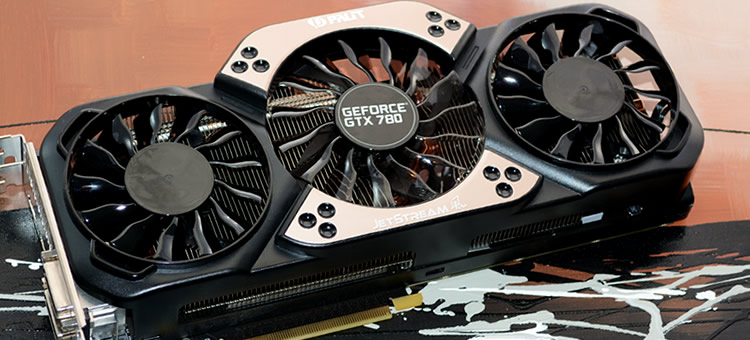Benchmarks: Battlefield 3, Crysis 3
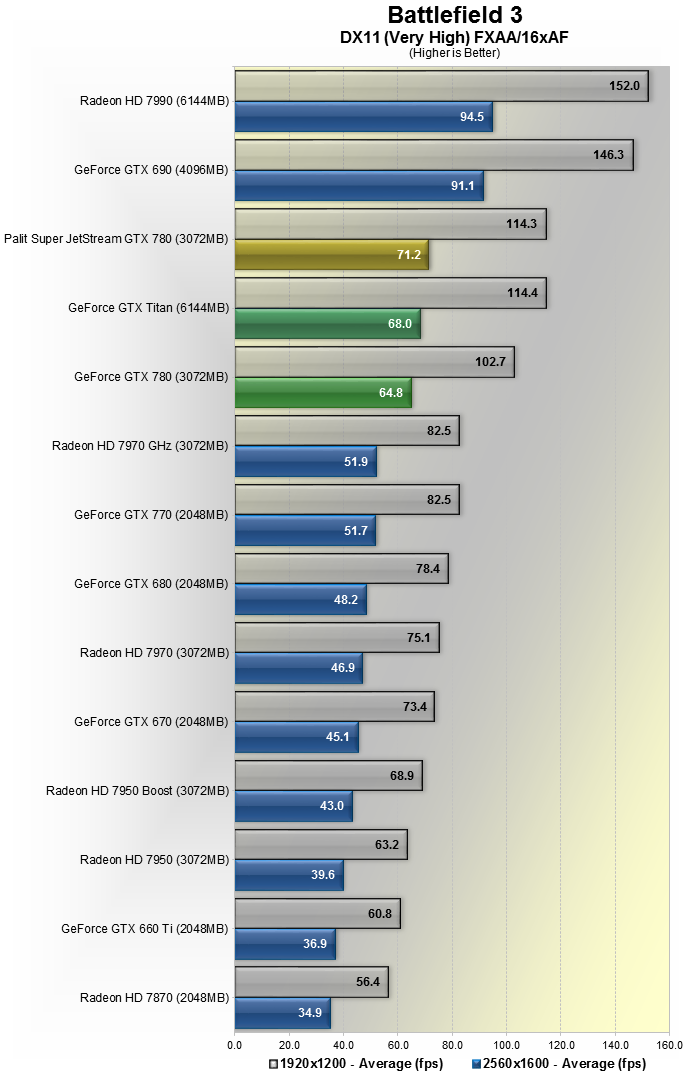
Testing the GTX 780 Super JetStream in Battlefield 3 reveals that it is in fact able to match and even beat the GTX Titan. At 2560x1600, it was 5% faster at 71.2fps, which also made it 10% faster than a standard GTX 780.
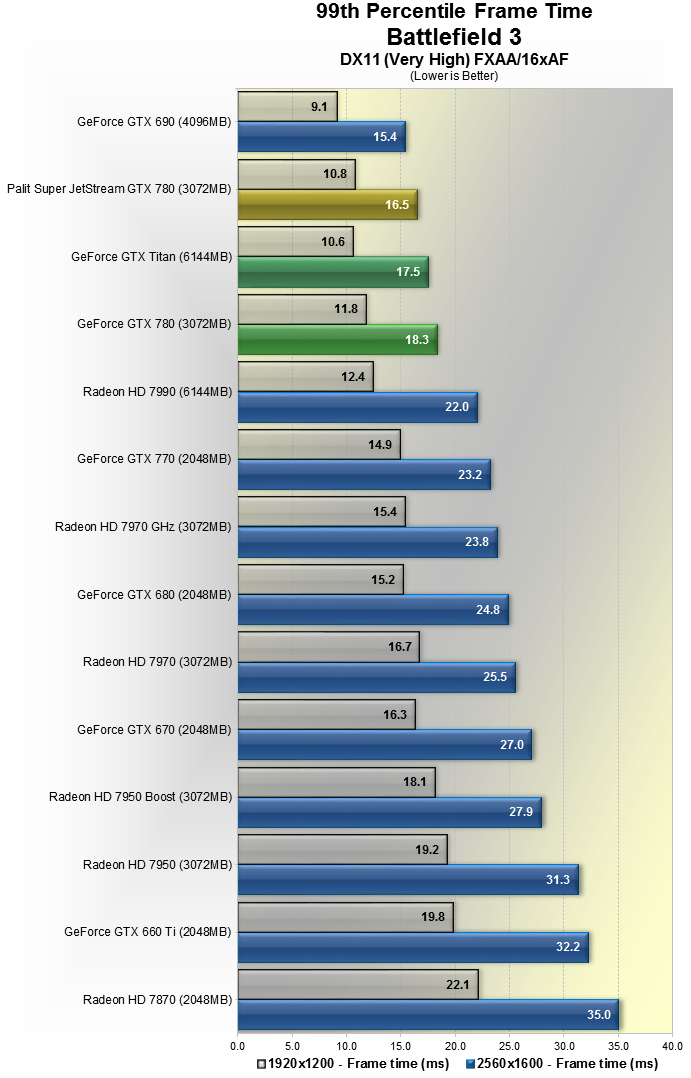
The frame time performance of the GTX 780 Super JetStream also put it slightly ahead of the Titan in Battlefield 3, taking just 16.5ms between frames at 2560x1600.
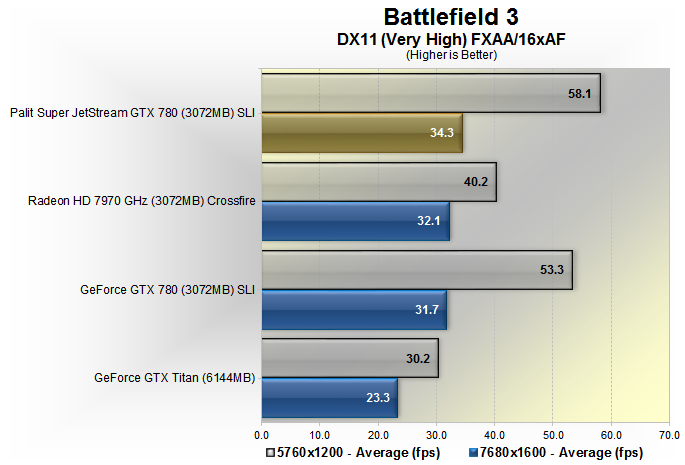
Using three monitors we found that a pair of GTX 780 Super JetStreams in SLI could deliver 34.3fps at 7680x1600, which was surprisingly just 2fps more than the HD 7970 GHz Edition cards. Still, while the dual GTX 780 Super JetStreams were just 7% faster than the 7970 GHz Edition in Crossfire, the setup still outpaced standard 780s by 8% and a GTX Titan by 47%.
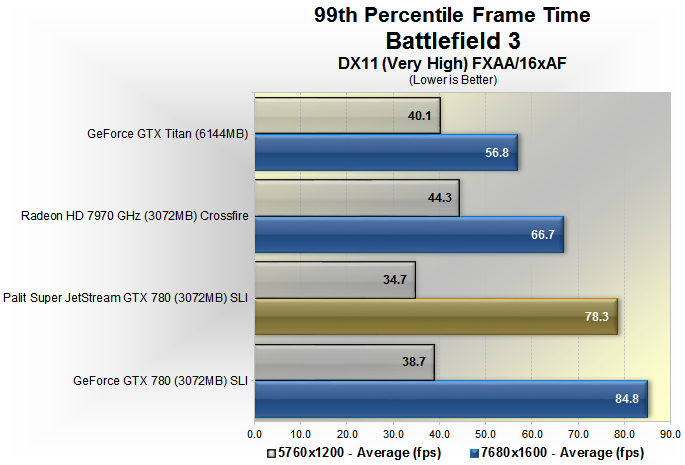
Interestingly, at 2560x1600 the HD 7970 GHz Edition Crossfire cards were faster on average between frames than the Super JetStream SLI cards, taking just 66.7ms versus 78.3ms.

Again, we see that the GTX 780 Super JetStream is able to outpace the GTX Titan, this time by 9%, which works out to be 14% faster than a standard GTX 780.
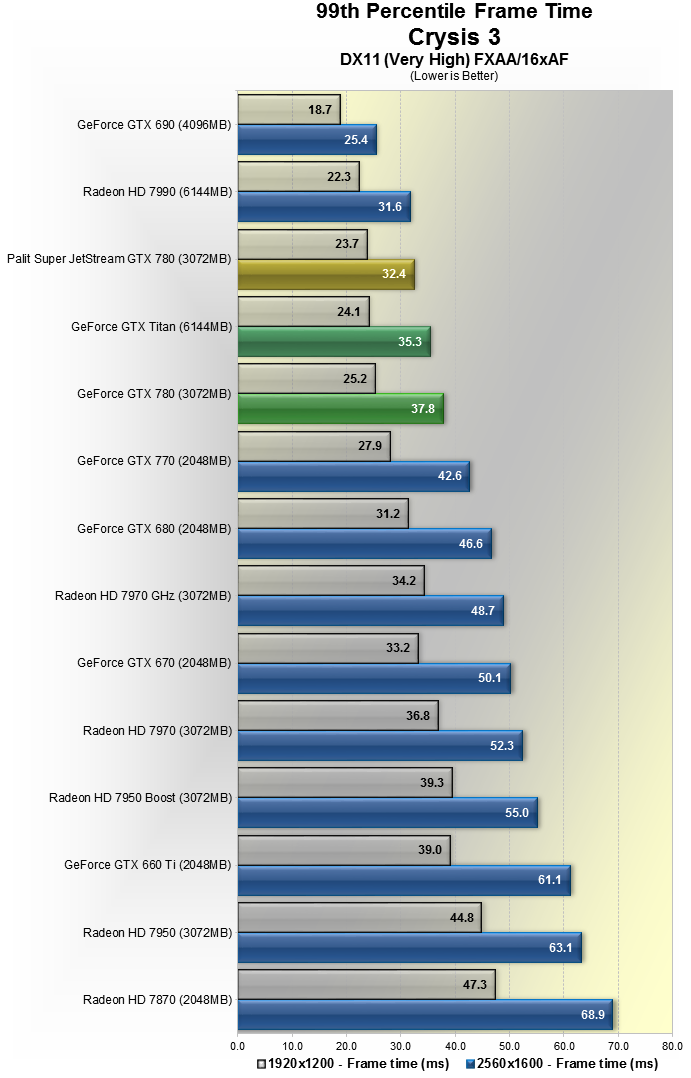
The frame time results align with what we saw from the frames per second testing, as the GTX 780 Super JetStream was 9% faster than the GTX Titan and 17% faster than a normal GTX 780.

Unlike what we saw when testing Battlefield 3, the GTX 780 Super JetStream SLI cards provided a significant performance gain over the HD 7970 GHz Edition Crossfire cards – 78% more performance precisely, while delivering 14% more frames than standard GTX 780s and 84% more than the GTX Titan.
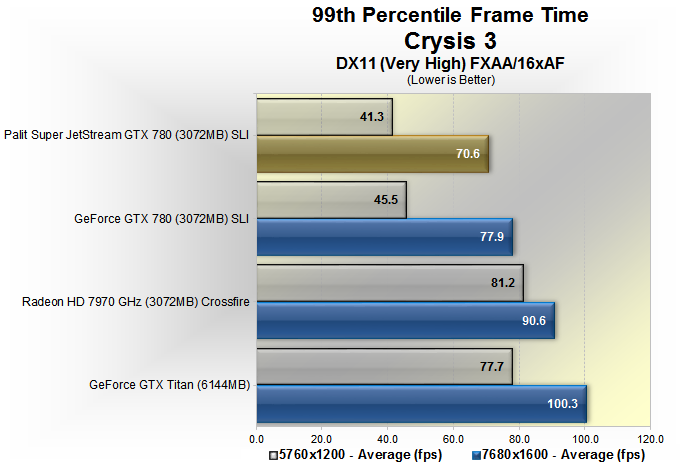
When it came to triple monitor frame time performance, Palit's cards remained on top taking 70.6ms between frames, while the standard GTX 780s took 77.9ms and the HD 7970 GHz Edition Crossfire cards 90.6ms.
